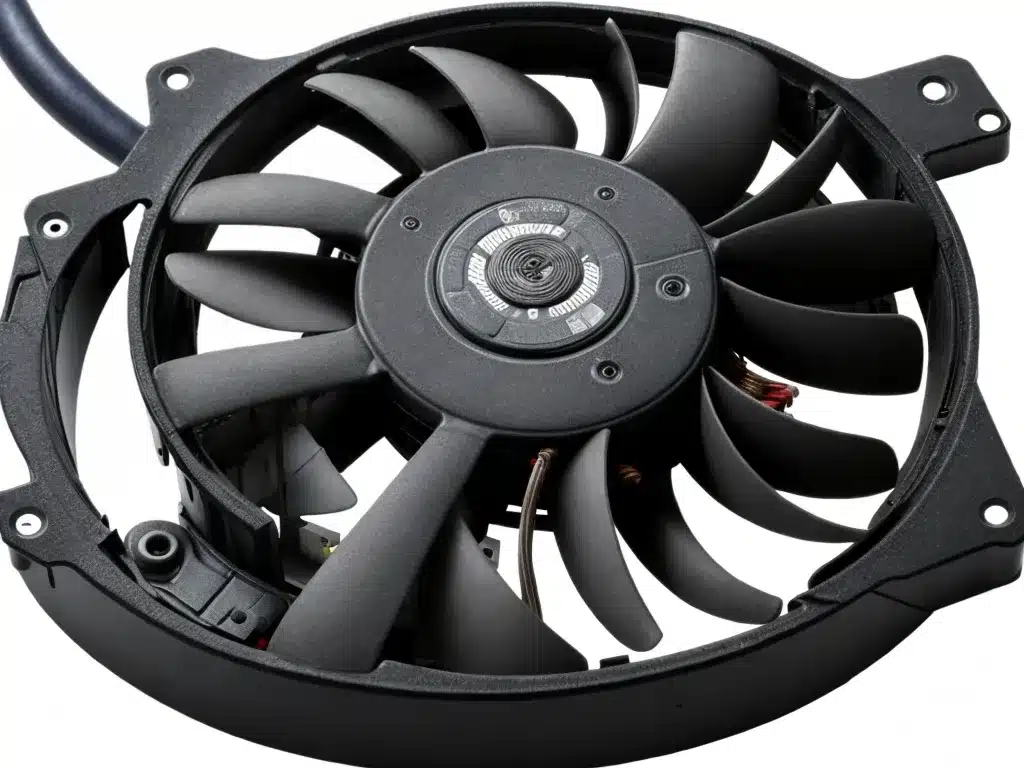Introduction
Keeping your laptop cool is important for performance and longevity. However, laptop fans and cooling systems can fail over time leading to overheating, throttling, and damage. In this guide, I will walk you through the steps to diagnose and fix common laptop fan and cooling problems.
Diagnosing the Issue
The first step is to identify exactly where and why the cooling system is failing. Here are some signs to look out for:
- Loud whirring noise from fans: Fans may be working overtime to compensate for heat buildup. Could indicate clogged vents/fins or failing fan.
- Periodic loud buzzing/grinding: Often signals a fan with bad/worn out bearings.
- Fans not spinning at all: Points to failed fan or connection issue.
- Overheating and throttling: Excessive heat causes CPU/GPU to throttle down. Implicates cooling deficiency.
- Random shutdowns: Critical overheating can force abrupt shutdowns to prevent damage.
- GPU/CPU over 90C at load: Temperatures exceeding 90C generally signify cooling is insufficient.
To confirm, monitor core temperatures with hardware monitoring software like Speccy or HWInfo. Load CPU and GPU with a stress tester and compare temperatures to spec.
Checking Fans and Vents
If temperatures are high, the next step is to thoroughly inspect fans and vents for any blockage or damage:
- Use compressed air to blow out any dust buildup in fan intakes or exhaust vents.
- Visually inspect fans while powered on to check for any that are not spinning.
- Check for damage like broken fan blades or bent fin stacks.
- Ensure no obstructions in air intake vents or channels.
Removing debris buildup and fixing any physical damage can help get things cooling properly again.
Replacing Faulty Fan(s)
If fans are noisy, grinding, or completely stopped, they may need replacement:
- Match part # of faulty fan to find a suitable replacement. OEM fans recommended.
- Follow disassembly guide for your specific laptop model to access and remove bad fan(s).
- Unplug fan connector and remove mounting screws to detach old fan.
- Install replacement with fresh thermal paste and ensure securely mounted.
- Reconnect fan cable. Double check wires not pinched during reassembly.
Replacing worn out or seized fans is generally straightforward if you take care. This usually resolves overheating issues caused by failed fans.
Reflowing/Replacing Heat Pipes
Faulty or separated heat pipes are another possible culprit for poor cooling:
- Heat pipes transfer heat from CPU/GPU to heatsink fins.
- Over time, they can lose efficiency and need reflowing or replacement.
- Reflowing involves carefully heating pipes to restore thermal bonding.
- For permanent fix, replace heat pipes and use fresh thermal interface material.
This is moderately difficult and risks damage if not done properly. Consider professional repair if unsure.
Reapplying Thermal Paste
Dried or insufficient thermal paste between CPU/GPU and heatsink can also cause overheating:
- Thermal paste ensures efficient heat transfer from chips.
- It dries out over 2-3 years and reduces cooling performance.
- To reapply – remove heatsink, clean off old paste, apply quality paste like Arctic Silver, reattach heatsink.
- Use thin, even layer and proper mounting pressure.
Fresh thermal paste is vital for heat dissipation and easy to reapply.
Undervolting CPU/GPU
For extra cooling margin, undervolting slightly reduces CPU/GPU voltages and power consumption:
- Run stress test to find stable undervolt offset for your particular chip.
- Set offset in BIOS or ThrottleStop app on Windows, use voltagecurve editor on Linux.
- Test stability. Even -50mv to -150mv can lower temperatures several °C without affecting performance.
Undervolting is an effective way to reduce laptop temperatures and strain on the cooling system.
Summary
- Diagnose faulty fans and cooling by checking temperatures, noise, and physical issues.
- Replace worn out fans and clear blockages for improved cooling.
- Reflow/replace heat pipes if heat transfer is poor.
- Renew dried thermal paste between CPU/GPU and heatsink.
- Undervolt CPU/GPU to reduce power and temperatures.
Taking methodical steps to identify and address cooling deficiencies can help restore laptop performance and longevity. Proper maintenance and replacements when needed are key.













